Yashwant Sagar wetland in Indore is a significant birding site in the Malwa region of Madhya Pradesh, and one of the two Important Bird Areas (IBA) in the Indore region. It is a man-made wetland on the Gambhir River. Since 2022, the reservoir has been recognised as a Ramsar site. This wetland is also home to migratory birds, including endangered Sarus cranes. The Sarus crane is classified as “vulnerable” by the International Union for Conservation of Nature (IUCN). Overall, it supports around 239 bird species, 39 species of fish, and a few other plants and mammals.
The Sarus Crane in the Indian subcontinent is found in north and central India, Terai Nepal (Southern Nepal) and Pakistan. Ajay Gadikar, a bird watcher and conservationist says that the decline in grass cover, excessive fishing and encroachments by fishermen pose a significant risk to their habitat, and hence their population.

Yashwant Sagar wetland over the decades has provided favourable conditions for the Sarus cranes to live, but the increase in human activities is impacting their needs from the habitat. Last year, Yashwant Sagar observed a 36% decline in the population of Sarus Crane.
“A survey done between April and July in 2023, observed only 32 Sarus Cranes [at the site] while the number was 50 in 2022 and 76 in its previous year,” claimed Ravi Sharma, ornithologist and president of Nature & Wildlife Conservation and Awareness Society (NWCAS).
“Despite the declaration of it [Yashwant Sagar] as a Ramsar site, we have observed a decline in the population of Sarus cranes in Yashwant Sagar,” Sharma told Ground Report.
Favourable conditions for Sarus Cranes
Sarus cranes are primarily a non-migratory species. However, some populations do travel short distances as part of migration.
In paddy fields or damp marshes, they construct massive nests and platforms constructed of reeds and other vegetation. In shallow water, the nest is built by stacking mud, and grasses with their roots, rushes, and straw to create a platform that rises above the water’s surface and resembles a small island. This indicates that agriculture favours the habitat needed for nesting. But, excessive agriculture and human disturbances in the lake hampers it.
The cranes breed mainly during the monsoons in India (from July to October). A clutch (the eggs laid at one time in one nest by a pair) typically consists of one or two eggs that are incubated for 26 to 35 days by both parents. They roost and forage in shallow water, which allows them to be safe from some ground predators.
Human-activities: A threat
According to bird-watchers, the Yashwant Sagar is considered a stronghold for the vulnerable Sarus Crane in Madhya Pradesh. Many shallow spots in the lake’s backwaters are also ideal for waders and other waterfowl. Shallow spots are the areas in the water which are less deep (less than 6ft.). However, K S Gopi Sundar, former programme head, of Cranes and Wetlands observed a declining trend of these shallow spots in the lake for the last two decades. He informed,
“Due to an increase in agricultural practices around the lake, farmers have gradually created deeper spots like ponds for their use and have increased the use of pesticides which impact the breeding and roosting.”
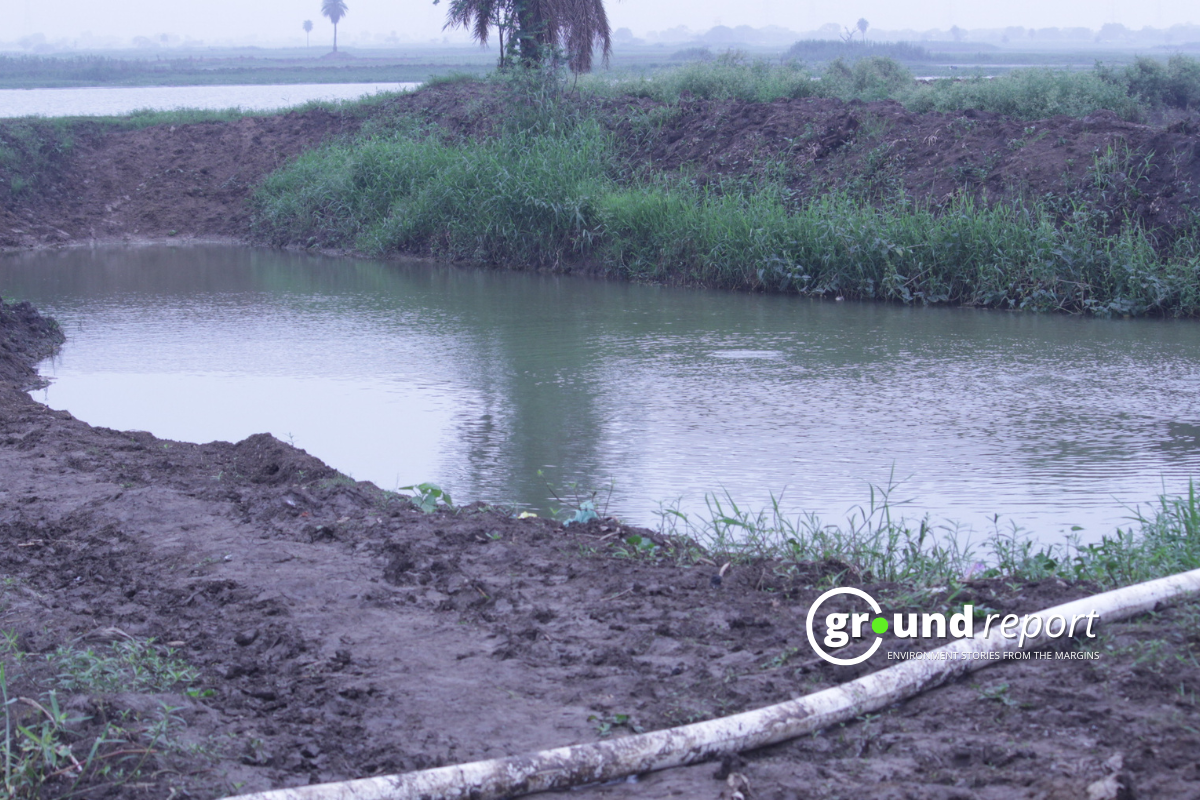
On the other hand, regular field visits by Ravi Sharma and his team have observed an increase in the number of fishermen at the lake. And he observed,
“Excessive fishing activities and creation of small ponds for the breeding of fishes and use of large nets are dangerous to all the birds. We also noticed carcasses of birds hung on the nets.”
Sundar has been working to understand the nature and characteristics of this bird since 1997. He recalls the number of the birds to be 180, which he observed in 1998 at Yashwant Sagar. He also observed that the removal of eggs by farmers (to reduce crop damage) and the destruction of eggs by crows or other native birds are also a few factors. Sarus cranes have been known to live up to 42 years. Human acts are often the cause of premature adult mortality.
“There can be cases of accidental poisoning from use of pesticides in agricultural areas,” he suggested.
Therefore, the experts have observed that both agriculture and fishing activities are posing a threat to the conservation of the wetland without a set of defined regulations. The fishermen and farmers create deep pond-like structures at the edges of the water body for fishing and irrigation, respectively. These are made to use water during summers when the wetland comparatively dries up. Fishermen use it to keep the fishes where the birds also get stuck in the laid nets. Meanwhile, the farmers use it to extract water to irrigate their fields.
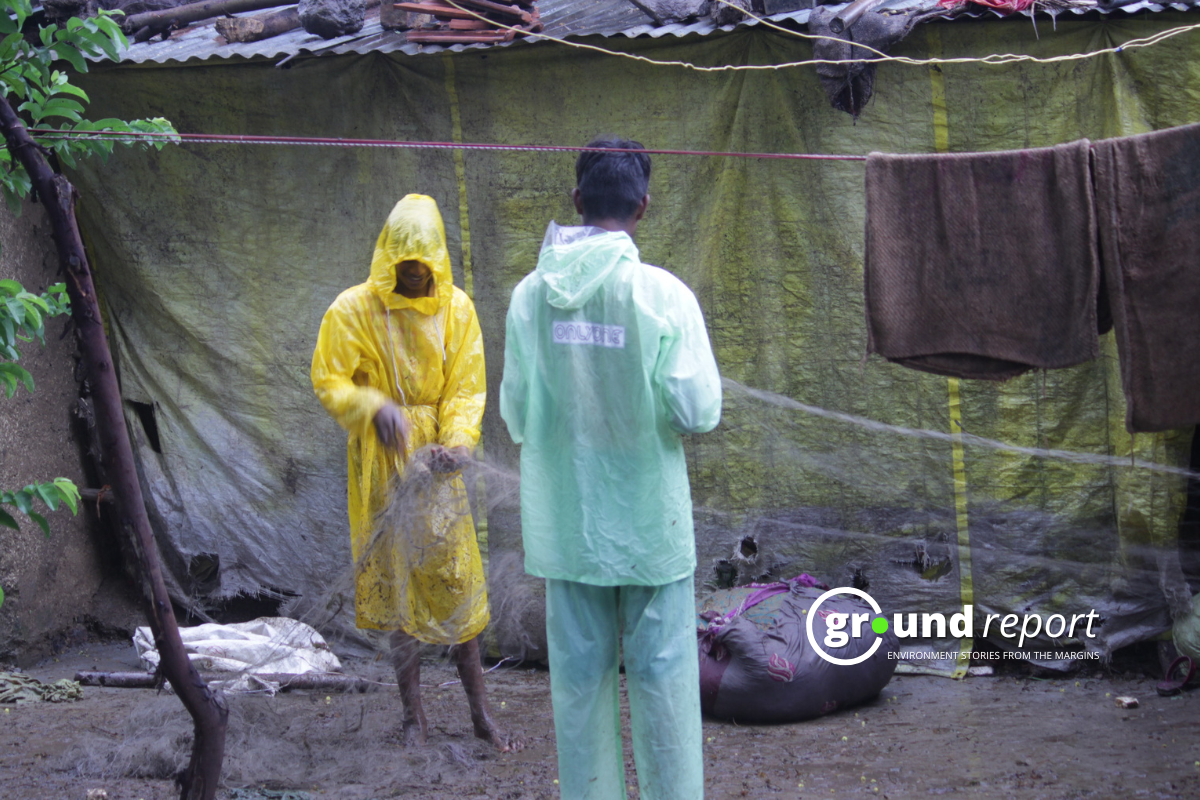
“Ramsar sites are not bound by any legal obligations. Hence, farmers also use pesticides in Yashwant Sagar which pollutes the water,” Sundar added.
A Ramsar report acknowledges an increase in pesticides across wetlands of international importance. “Pesticide accumulation in wetlands is of growing global concern as pesticide residues can pollute the aquatic environment through direct run-off and leaching and are often toxic to fish and other aquatic species. Furthermore, pesticides contaminate food sources and can be toxic to people, presenting a significant threat to human health. Total pesticide use increased in the period 1990-2012 from 2.3 to about 4.1 million tonnes.”
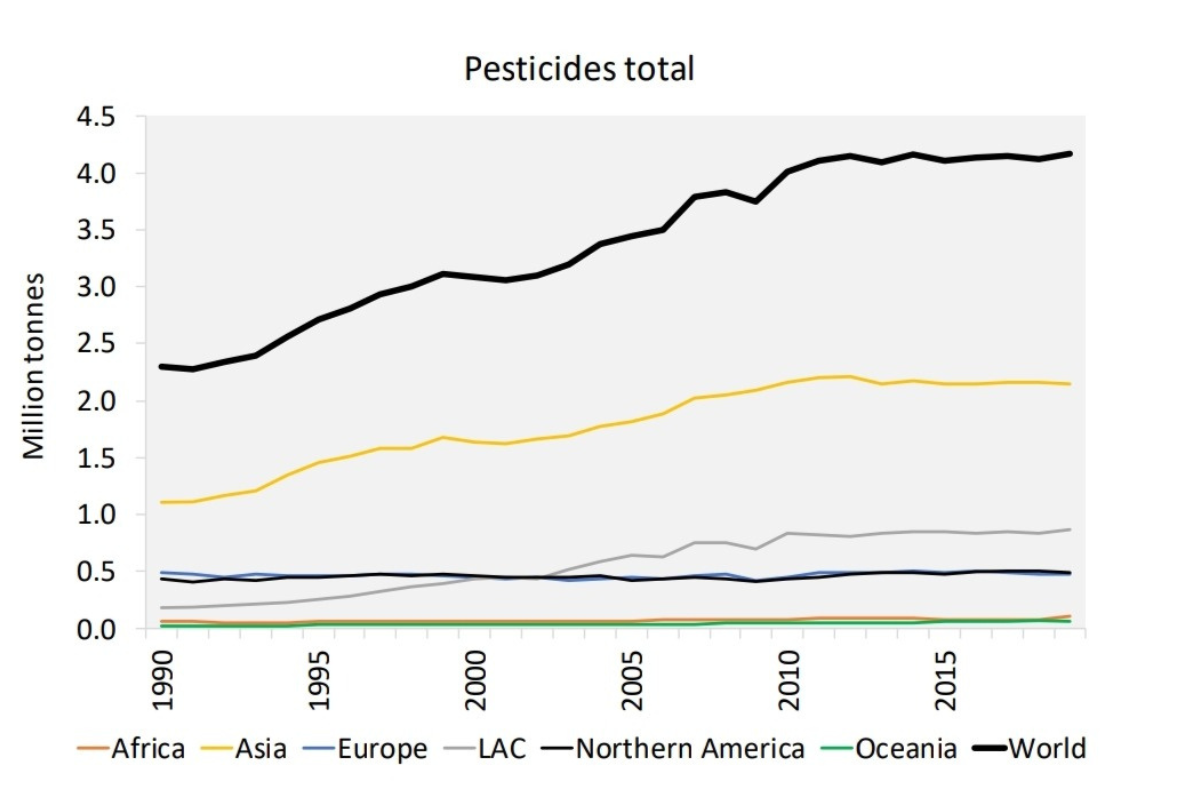
The graph indicates that the use of pesticides is highest in Asia as compared to other parts of the world.
“An action plan to regulate the human interactions and excessive fishery practices should be kept at an urgency to conserve the Sarus Cranes,” Gadikar said.
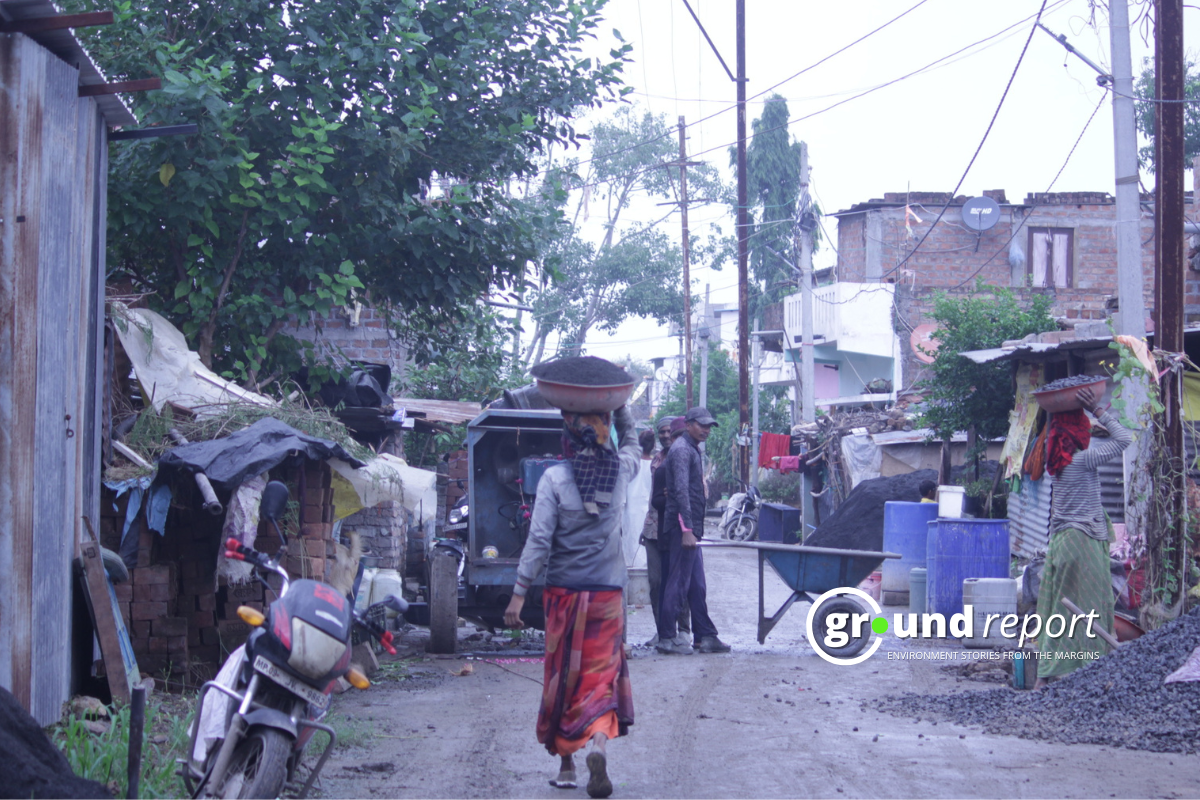
Wetlands (Conservation and Management) Rules, 2017 prohibits conversion for non-wetland uses including encroachment of any kind in a notified wetland. The guidelines for implementing Wetlands (Conservation and Management) Rules, 2017 provide steps to develop an action plan including organic farming practices in immediate catchments and environmental impact assessments before construction. Yashwant Sagar does not have an action plan as of now. Experts believe an effective plan can help to safeguard the vulnerable Sarus Cranes and other migratory birds.
Rohit Rai, an Assistant Engineer with Indore Municipal Corporation (IMC) informed Ground Report,
“We conduct awareness campaigns with farmers to educate them about the significance of wetland and organic farming in the area. If we receive any complaints of heavy chemical use, we respond accordingly.”
Interestingly, He also informed that as of today, there are no farmers and fishermen registered with the IMC, who work at the Yashwant Sagar wetland.
Significance of Yashwant Sagar
In 1930, Yashwant Rao Holkar, the former ruler of the Holker State of Indore, constructed the Yashwant Sagar reservoir to achieve multiple goals, including irrigation and drinking water supply. Currently, it is mostly used to deliver water to the city of Indore and is also employed commercially for fish farming.

Agriculture is the majority of the catchment area for this wetland. However, experts believe that agricultural land has increased over the last few decades. The main cultivation in the area surrounding it is that of wheat, soybean, corn, pulses and vegetables.
This lake’s submergence area is 832 hectares, and its approximate catchment area is 2,650 hectares. The Yashwant Sagar at its full reservoir level stores up to 16.99 MCM of water with a maximum depth of 15-16 m. The reservoir hosts many birds, which include Indian Shag, Shikara Oriental, Darter Oriental, Honey Buzzard, Little Egret, White Eyed Buzzard, Great Egret, Crested Serpent Eagle, Intermediate Egret and many others.
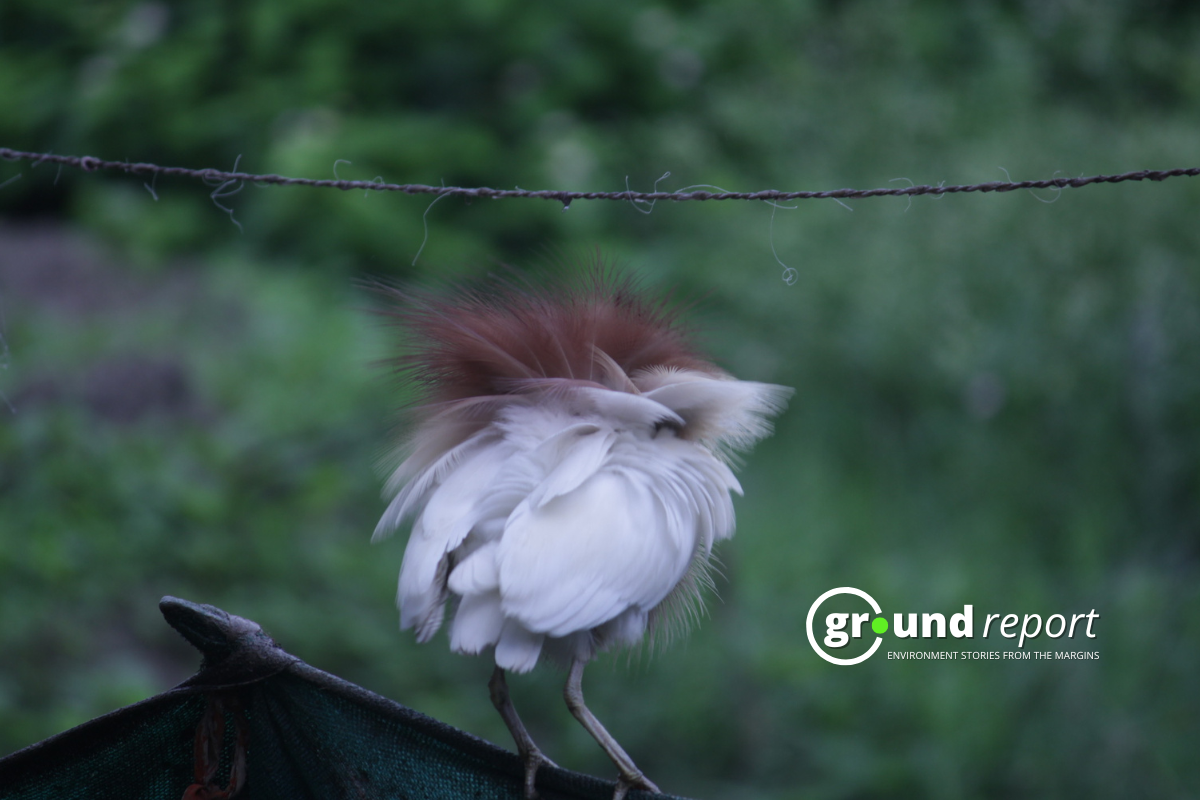
Surprisingly, despite being a Ramsar site, Yashwant Sagar wetland has no official demarcation.
“We are still working on the demarcation of the wetland and a management plan of five years,” Rai added.
Need for an action plan
A wetland site is considered to be of worldwide importance, according to the Ramsar Convention, commonly referred to as “The Convention on Wetlands,” an international environmental pact signed on February 2, 1971, in Ramsar, Iran. Notably, designating a wetland as a Ramsar site does not ensure its preservation as the title only imposes an obligation on governing bodies to create a management plan within six months of the declaration. The responsibility of conservation resides with the local authorities responsible for the management of the wetland, in this case, the IMC.
“Right now, I think IMC is not doing anything to keep a check on the pesticide use and increasing fishery activities,” added Sharma.
Keep Reading
Part 1: Cloudburst in Ganderbal’s Padabal village & unfulfilled promises
India braces for intense 2024 monsoon amid recent deadly weather trends
Support us to keep independent environmental journalism alive in India.
Follow Ground Report on X, Instagram and Facebook for environmental and underreported stories from the margins. Give us feedback on our email id greport2018@gmail.com.
Don’t forget to Subscribe to our weekly newsletter, Join our community on WhatsApp, and Follow our YouTube Channel for video stories.






